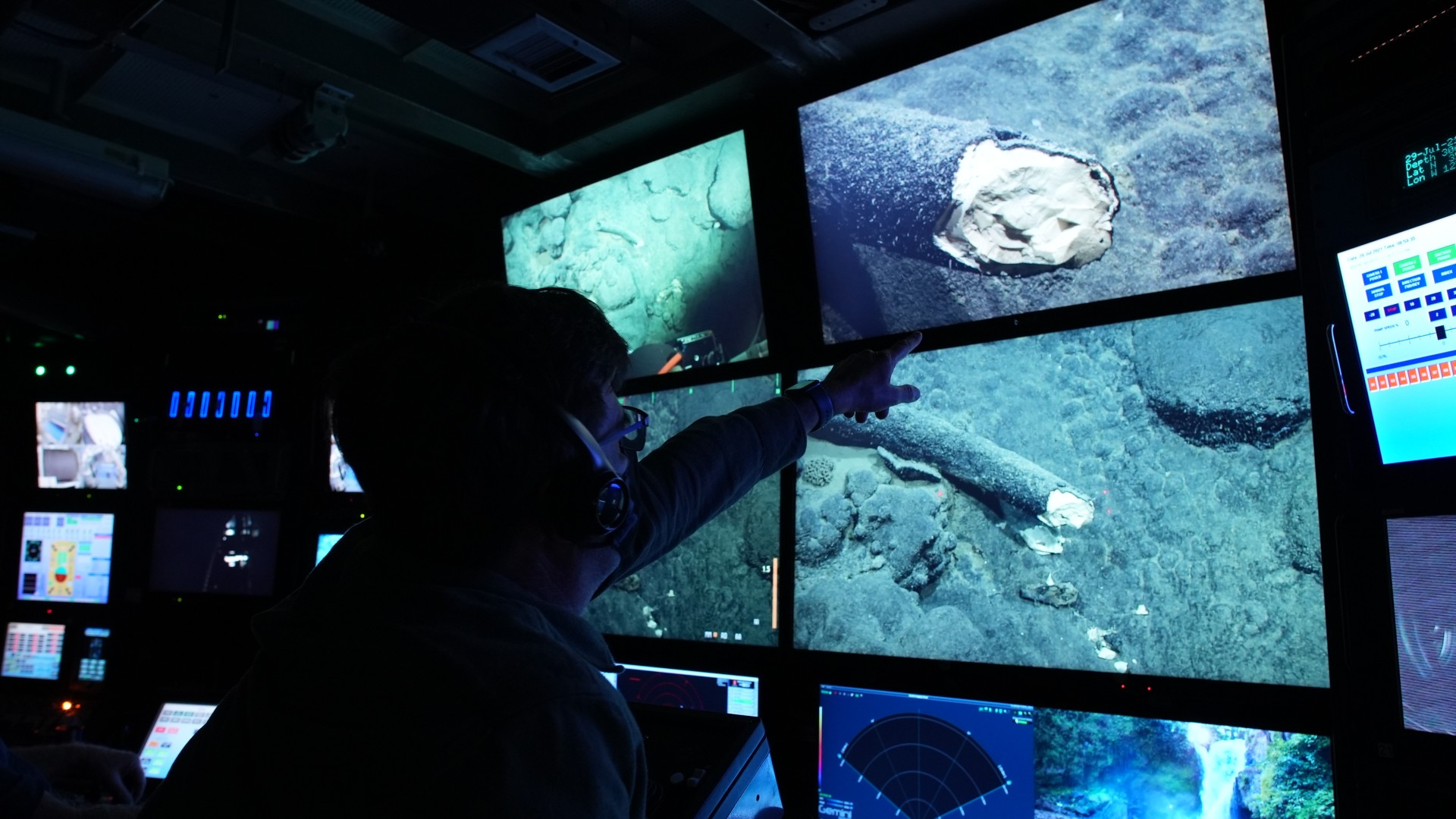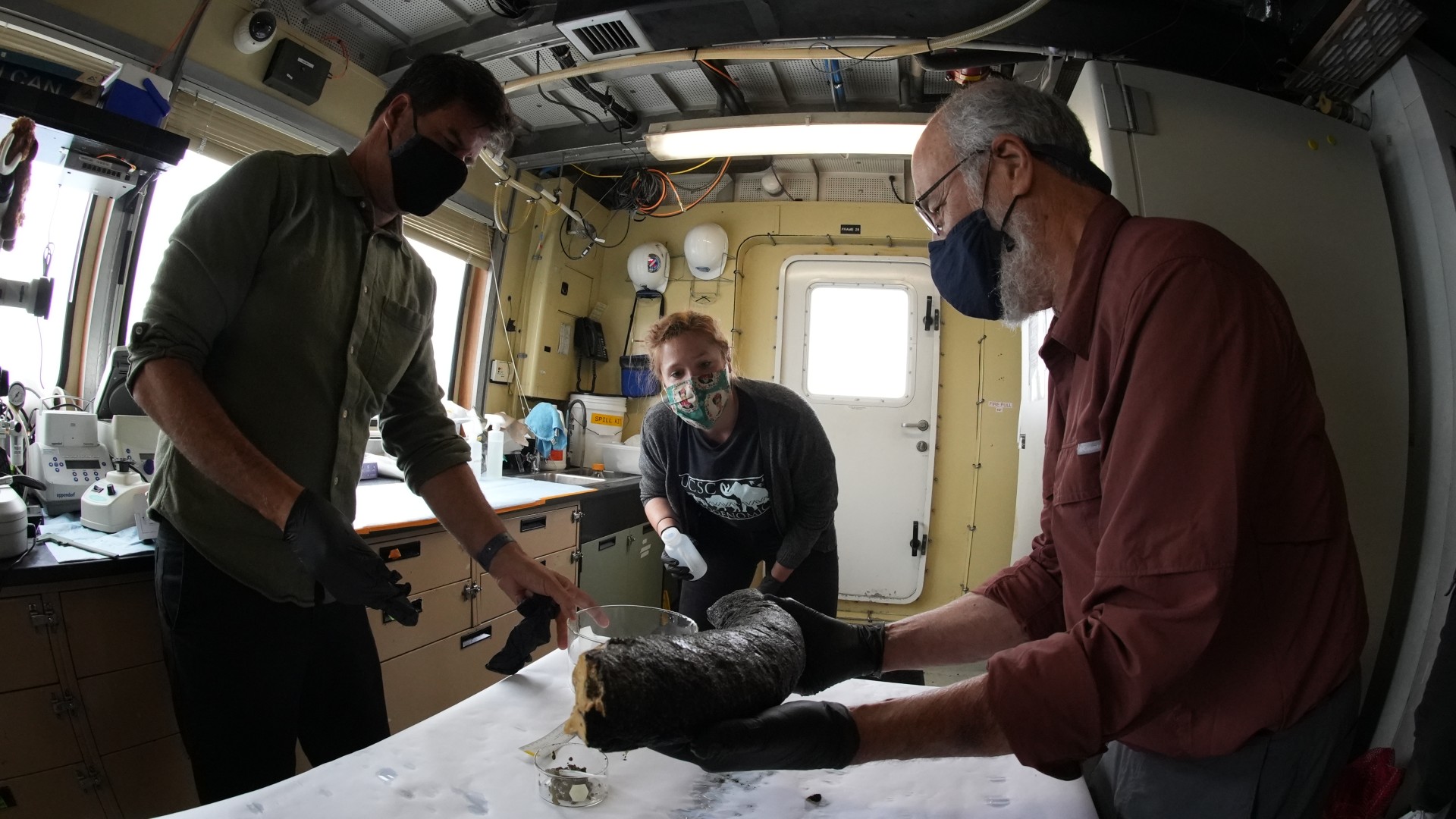Exquisitely-preserved mammoth tusk found 10,000 feet underwater
The tusk, which belonged to a female mammoth, is more than 100,000 years old

Researchers have discovered a Columbian mammoth's (Mammuthus columbi) tusk 185 miles (300 kilometers) off the coast of California. Scientists estimate that the tusk, which was found at a depth of about 10,000 feet (3,070 meters), is well over 100,000 years old.
Related: Photos: a 40,000-year-old mammoth autopsy
"You start to 'expect the unexpected' when exploring the deep sea, but I'm still stunned that we came upon the ancient tusk of a mammoth," Steven Haddock, a marine biologist at the Monterey Bay Aquarium Research Institute (MBARI) and one of the researchers who found the tusk, said in a statement.
In 2019, Haddock and submersible pilot Randy Prickett, also with the MBARI, were scanning the deep ocean off California using a remotely operated vehicle (ROV) when they came across a strange object: a 3-foot-long (1 m) tube that looked suspiciously tusk-like. The pair tried to collect the object, but they were initially only able to obtain a small piece that broke off from the tip, The New York Times reported.
From this fragment, researchers found that the object was a tusk from a female mammoth. But they couldn't confirm how old it was or pinpoint the exact species.
Two years later, Haddock and Prickett returned to the site with a full team of paleontologists and genomics experts. This time, using the ROV's robotic arm, they collected the entire tusk, which was coated in a thick black crust of naturally deposited iron-manganese. Preserved mammoth tusks are usually discovered in Arctic permafrost, but in this instance, the combination of very cold water and high pressure acted like a refrigerator for a slab of meat, keeping the tusk in relatively pristine condition for thousands of years, according to Insider.

"If the tusk had been found on land, deciphering its history would not be as straightforward," Terrence Blackburn, a geologist at the University of California, Santa Cruz (UCSC) who was involved in the research, said in a statement.
Get the world’s most fascinating discoveries delivered straight to your inbox.
Thanks to its exquisite preservation, the scientists were able to recover DNA from the tusk’s inner tissue. Katherine Moon, a paleogenomicist at UCSC, called this the team's "'Jurassic Park' moment" in an interview with the New York Times. So far, the team has determined the mammoth's species, sex, age at death, and even its geographic range during its lifetime. The results are not yet published.
Thousands of similar discoveries may await scientists on the deep ocean floor. But human activities, such as undersea oil drilling, have the potential to destroy these natural treasures.
"In this really unique, underexplored and largely underappreciated environment, there is a lot of value in having habitat that is undisturbed," Haddock told the New York Times.
Originally published on Live Science.

Joanna Thompson is a science journalist and runner based in New York. She holds a B.S. in Zoology and a B.A. in Creative Writing from North Carolina State University, as well as a Master's in Science Journalism from NYU's Science, Health and Environmental Reporting Program. Find more of her work in Scientific American, The Daily Beast, Atlas Obscura or Audubon Magazine.


